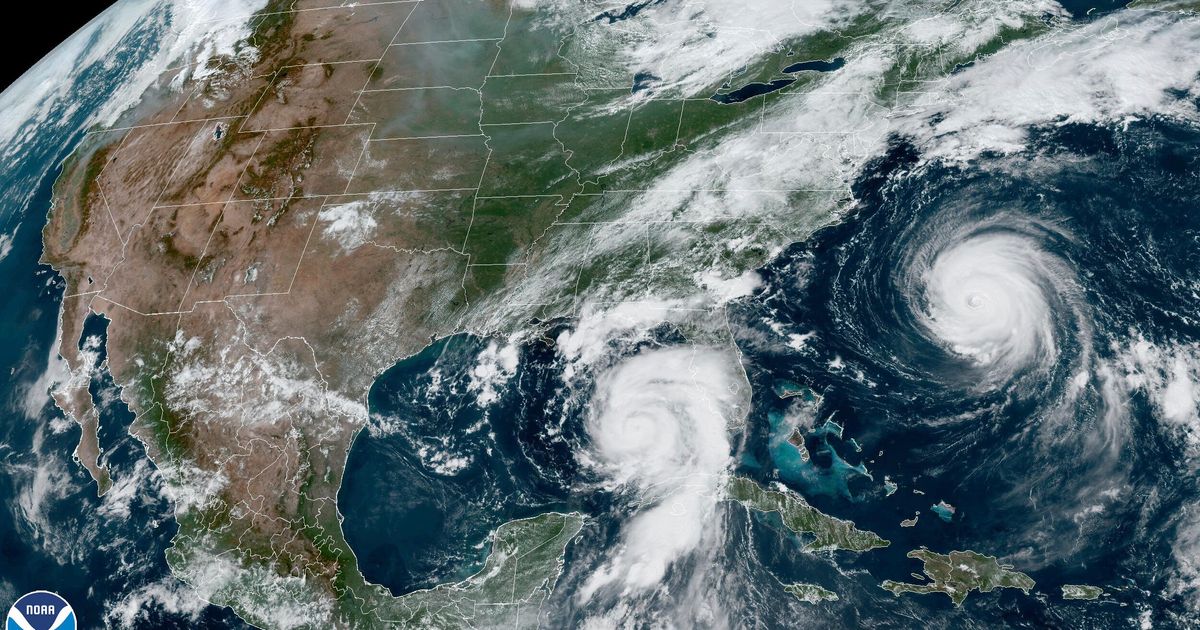On Tuesday night, amidst the impending threat of Hurricane Idalia, Fox News host Jesse Waters introduced his guest as “the nation’s most famous climate scientist.” However, the guest turned out to be none other than Judith Curry, a retired climatologist known for her dismissive stance on the human impact on climate change. What ensued was a nearly seven-minute segment filled with misinformation about climate change and its consequences.
Curry made the false claim that there is no evidence linking climate change to severe weather events. Interestingly, throughout her interview, a storm tracker on the screen kept viewers updated on Hurricane Idalia’s progress and wind speeds. It’s important to note that while no single hurricane can be directly attributed to climate change, Hurricane Idalia exhibits characteristics of a storm that is supercharged by the effects of a warming planet. Tropical storms thrive in warm waters, and the Gulf of Mexico is currently experiencing a significant marine heat wave. Just earlier this month, Gulf waters reached record-breaking temperatures, averaging 88 degrees Fahrenheit.
As Hurricane Idalia churned over the blazing Gulf and approached Florida, it underwent rapid intensification, a phenomenon in which a cyclone’s maximum sustained winds increase by at least 35 mph within a 24-hour period. From Tuesday morning to Wednesday, Idalia transformed from a Category 1 to a Category 4 hurricane, with wind speeds spiking by 55 mph. While it eventually weakened slightly to a Category 3 before making landfall, this violent growth aligns with the patterns of increased hurricane activity that scientists attribute to climate change-induced ocean warming.
Eric Blake, a senior hurricane specialist at the National Hurricane Center, expressed concern about the frequent occurrence of rapid intensification before hurricanes make landfall in recent years. He tweeted about Hurricane Idalia’s alarming signs, highlighting the unsettling feeling it evokes. Idalia is one of only 10 storms since 1950 to intensify by at least 40 mph in a single day before hitting land, joining the ranks of Hurricanes Ida, Laura, and Michael. Jeff Masters, a former federal hurricane scientist, emphasized the worrying fact that five out of these 10 storms have occurred within the past seven years. This further underscores the relationship between climate change and the likelihood of rapid intensification.
Masters also elaborated on the destructive power of Hurricane Idalia. He argued that the increased sea surface temperatures resulting from anthropogenic climate change contributed to a 40-50% boost in the storm’s winds, equating to a substantial increase in potential damage. Even a seemingly small increase of 4-5% in hurricane winds can have exponential consequences. According to the National Oceanic and Atmospheric Administration, a Category 2 hurricane with 100 mph winds can cause 10 times the damage of a Category 1 hurricane with 75 mph winds. This includes not only wind damage but also storm surge, inland flooding, and tornadoes.
Scientists have long warned about the connection between climate change and more extreme hurricanes. The National Climate Assessment of 2018, a report mandated by Congress, concluded that increases in greenhouse gases and decreases in air pollution have contributed to the uptick in Atlantic hurricane activity since 1970. Additionally, this report predicts that Atlantic and eastern North Pacific hurricane rainfall and intensity will continue to increase in the future. A 2020 federal study analyzing satellite data over a 40-year period found that global warming increases the likelihood of tropical cyclones reaching Category 3 strength or higher by approximately 8% per decade. The 2021 United Nations report solidified these findings, stating that climate change is driving an increase in the proportion and intensity of intense tropical cyclones worldwide.
Federal Emergency Management Agency Administrator Deanne Criswell echoed the influence of elevated ocean heat on intensifying cyclones. Criswell emphasized that these storms are intensifying so rapidly that local emergency management officials have less time to prepare and evacuate, presenting a critical challenge for future planning and communication.
Unfortunately, despite the mounting evidence, Florida’s Chief Resilience Officer, Wesley Brooks, took to social media to undermine the scientific consensus. He claimed that there is no significant trend in the intensity of landfalling hurricanes in Florida over time. This statement comes as Florida grapples with the devastating impacts of Hurricane Idalia, including widespread flooding. The rejection of federal clean energy and climate funding by Florida Governor Ron DeSantis, along with the approval of climate change denial materials in classrooms, further highlights the state’s resistance to acknowledging the climate crisis. Additionally, DeSantis has remained silent about the mass bleaching events occurring in the Florida Keys, signaling a lack of action on both environmental and economic fronts.
In conclusion, Hurricane Idalia serves as another example of the growing threat posed by climate change. The scientific evidence linking climate change to intensified hurricanes and extreme weather events is undeniable. It is imperative that we acknowledge and address these realities to mitigate the impact of future storms and protect vulnerable communities.
Denial of responsibility! VigourTimes is an automatic aggregator of Global media. In each content, the hyperlink to the primary source is specified. All trademarks belong to their rightful owners, and all materials to their authors. For any complaint, please reach us at – [email protected]. We will take necessary action within 24 hours.


